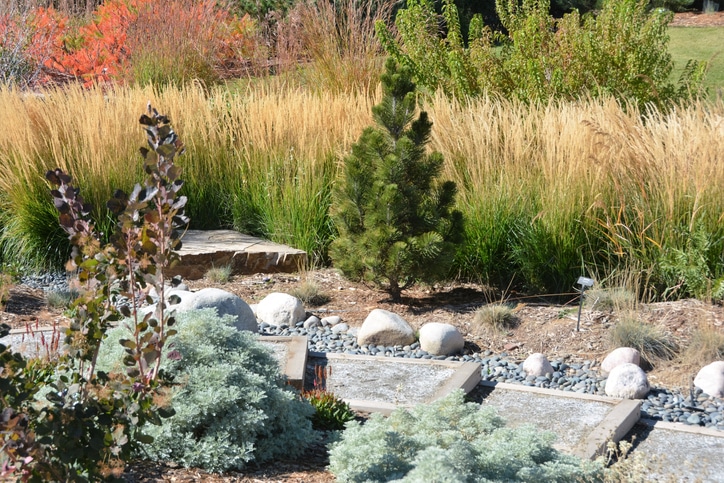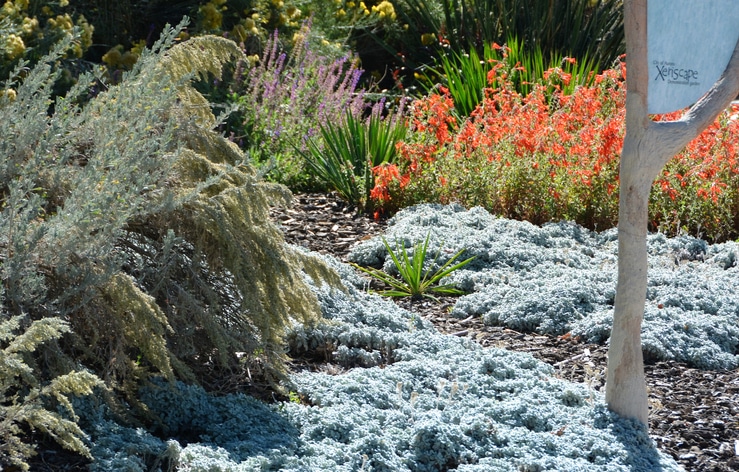How To Xeriscape Your Yard
Xeriscaping that is true to its definition abides by seven principles. Following these principles will help you create a yard that costs less to maintain, helps conserve water, and can survive drought.
Here is a brief introduction to the seven principles of xeriscaping:
1. Intentional planning and design
Like everything in life, the success of your landscape depends on how well you plan and design it. Divide your xeriscaped yard into zones — each zone housing plants that have the same watering requirements. By keeping your thirsty plants separated from more water-efficient plants, you reduce water waste. Sunlight is another thing to consider when creating your zones. You’ll want your toughest, most water-efficient plants to be located in zones that receive the most sunlight. Keep less tolerant plants in the shade.
2. Limitation of turf/grass/lawn
Even in xeriscape landscaping, turfgrasses serve a purpose. Use grass intentionally, putting it where it fulfills a utilitarian need. For example, an island of grass for children to play on, or against a hill to prevent erosion. Can you have a large, green lawn in your xeric yard? Scroll down for the answer.
3. Choosing water-efficient plants
This is where you can dispel the myth that being drought-tolerant equals a rock garden and cacti. There is a huge variety of fragrant, colorful, and gorgeous plants to choose from for your xeriscaped landscape. From multihued leaves to fruit-bearing, to long-blooming, there are water-efficient plants for every style of eco-friendly landscape. Three of our favorite plants include the tiger eyes sumac, bonfire cushion spurge, and diablo ninebark
4. Watering wisely
You’ll need to water more frequently when your plants are fresh and establishing their root systems, but as your garden ages, you can begin to water less frequently. Once you have a well-developed xeriscaped yard, the trick is to water deeply, not frequently. This means periodically soaking the different zones in your garden, getting the water to sink down about 8 inches before stopping. This style of watering mimics the heavy rainstorms which periodically occur in arid and desert regions.
5. Soil amendments
Good soil promotes healthy plant life and retains water — which means you can water your plants less. One way to do this is by mixing organic matter and fertilizer into your existing soil. This will enable sandy soil to retain water and will help promote plant growth in clay soil. Another method of preparing the soil is rototilling, which stimulates root growth by allowing for better infiltration of air and water.
6. Use of mulches
A big part of xeriscaping is strategically using mulch to reduce evaporation, erosion, and maintain proper soil temperature. You can choose between organic mulch, like bark, or rock mulch. Quality mulches will promote plant growth by keeping the soil moist, deflecting heat, and making it difficult for weeds to grow.
7. Appropriate landscape maintenance
Like all landscapes, xeriscapes require regular maintenance. This includes things like pest management, occasional weeding, and pruning. If you’re installing an automatic irrigation system, you’ll also need to schedule regular irrigation system maintenance to ensure that your drip systems are functioning properly and are adjusted to match the season. More tips on maintenance below.


